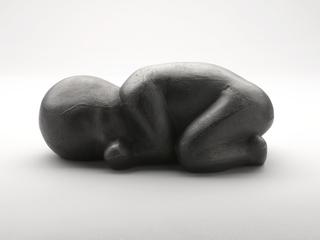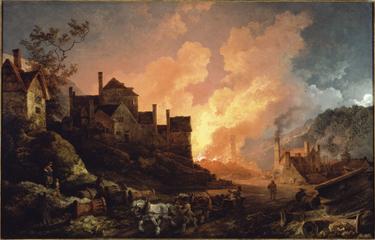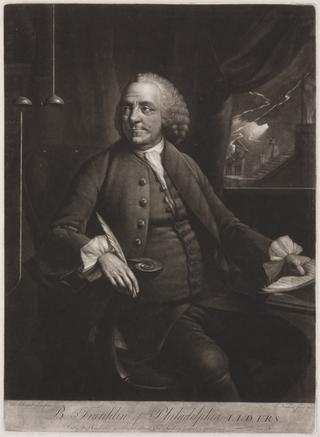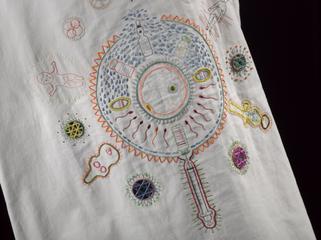
Computer drawing made by Desmond Paul Henry using Drawing Machine 2
- Made:
- 1964 in Manchester
- maker:
- Desmond Paul Henry



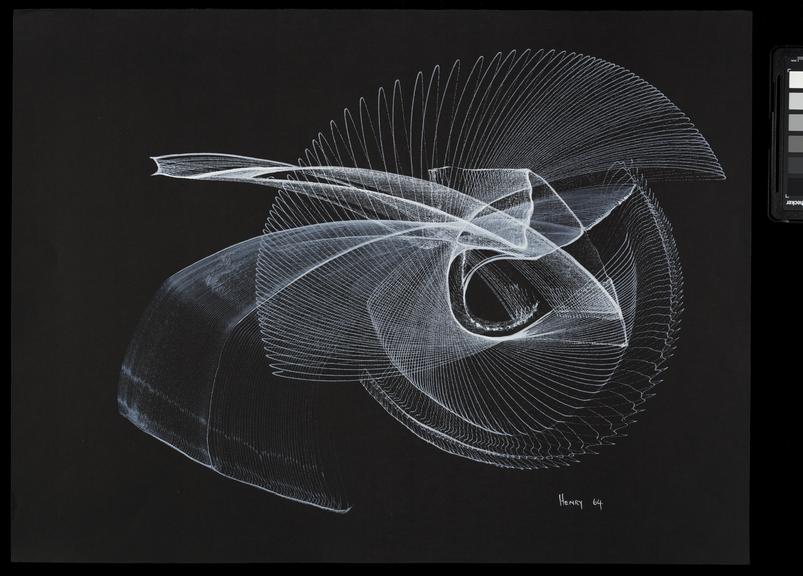
Computer drawing made by Desmond Paul Henry using Drawing Machine 2, 1964, no.507. White on black ground. Signed 'Henry 64' bottom right.
Drawing machine 2 was created by British artist Desmond Paul Henry in 1962 in Manchester, using parts from a WW2 Bombsight Analogue computer. It was one of three machines developed by Henry to see how a mechanism might record its own movements, through drawing on paper. He had bought the bombsight computer from an army surplus in the 1950s and found himself transfixed by the ‘peerless parabolas’ of its working parts. Using training from REME (Royal Electrical and Mechanical Engineers) during WW2, he combined the computer with other components to create electronically-operated drawing machines that relied mainly on elements of chance. This meant that they could not be pre-programmed and the resulting drawings were each unique. Henry compared his strangely organic images to those from natural form mathematics, pendulum harmonographs or ornamental geometric lathes.
Already an accomplished artist in the 1960s, Henry also worked with hand drawing and camera-less photography, using spare paper from Kodak, where his father worked. He was encouraged by LS Lowry to include his drawing machines in a solo exhibition in August 1962 at the Reed Gallery in London. The show was the prize for a competition for local Salford artists that Lowry judged. Henry went on to feature on the first ever BBC Look North in September 1962 and was dubbed the ‘Picasso of the machine age’ by the Manchester Evening News. Also a professor at the University, Henry was departmental notetaker at a seminar in 1949 at which Alan Turing first presented ideas for the Turing test.
Drawing Machine 2 was subsequently included in the landmark show of computer art at the Institute of Contemporary Art in 1968 – Cybernetic Serendipity – and its touring version, with an essay by Henry in the catalogue.
Details
- Category:
- Art
- Object Number:
- 2021-1674
- Materials:
- paper (fibre product)
- Measurements:
-
overall: 390 mm x 520 mm
- type:
- drawing

